After a hellish mid-week commute that trapped me underground for nearly an hour, what could possibly lure me back to Brooklyn on a Sunday? BROOKLYN BOOK FESTIVAL!
My literary life partner, Ken, accompanied me. He is hard at work on his new novel, tentatively titled Love Like Rain, which foretells of an apocalyptic world where a handful of survivors fight for the last source of water. (Intrigued? Draft first chapter available here.)
Ken and I joined a large crowd in Brooklyn’s Borough Hall Plaza to hear Dr. Brittney Cooper, Daisy Hernández and Mychal Denzal Smith discuss “Intersectionality and Activism.” Mr. Smith asked the audience: “After the Women’s March [on Washington], what will be the political program that we follow?” Ms. Cooper explained how she is actively involved in the Black Lives Matter movement—she used humor and passion as tools to encourage the audience to act. (Ms. Cooper’s newest book, Eloquent Rage: A Black Feminist Discovers Her Superpower, will be available in February 2018.)
As I scanned the Brooklyn Book Festival program, I was proud that my employer, Brooklyn Law School, was a host site for free panels on topics ranging from big data to immigration to young adult fiction. These Sunday afternoon programs were packed! BLS President and Dean Nicholas Allard moderated the panel discussion: “Culture, Politics and the Supreme Court.” You can view the recording of this discussion (and many others) through C-SPAN’s 2017 Brooklyn Book Festival Book TV.
The Festival’s Literary Marketplace showcased friendly authors and their recent works. At Brooklyn Law School’s booth, I greeted authors/professors William Araiza (standing on the far right in the photo below) and Heidi K. Brown (standing next to Professor Araiza in the photo below).
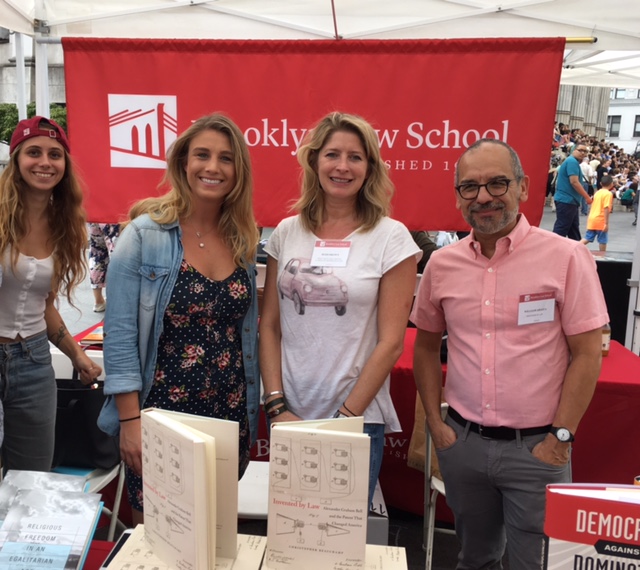
Professor Araiza’s most recent book is: Animus: A Short Introduction to Bias in the Law (2017). He notes in the introduction: “Animus matters more than ever today. At a very practical level, animus has become one of the Supreme Court’s favorite tools when considering claims that a plaintiff’s equality rights have been violated.” I encourage you to read this book to discover what the constitutional law concept of “animus” means today. Professor Brown’s thoughtful new book is: The Introverted Lawyer: A Seven-Step Journey Toward Authentically Empowered Advocacy (2017). Earlier in her career, Professor Brown had to address her own fear of public speaking while litigating. Her work to conquer this fear inspired her book. Come hear her book talk about The Introverted Lawyer on the evening of October 3, 2017. Other notable featured titles by BLS faculty were: Dana Brakman Reiser & Steven A. Dean, Social Enterprise Law (2017); Christopher Beauchamp, Invented by Law: Alexander Graham Bell and the Patent That Changed America (2015); K. Sabeel Rahman, Democracy Against Domination (2016); and Nelson Tebbe, Religious Freedom in an Egalitarian Age (2017).
At “Refugee Reportage,” journalists Deborah Campbell and Lauren Wolfe explained the great value of a skilled “fixer” (= interpreter + guide + excellent source of contacts) to a foreign correspondent. They noted that a good fixer, working with foreign journalists, places her or his life at risk. When Ms. Campbell read from A Disappearance in Damascus, I, like, the audience, was spellbound. What had happened to brave Ahlam, the Iraqi refugee in Damascus who provided so much help to Ms. Campbell in 2007? I am eager to read this beautifully written book to find out.
Finally, I met volunteers from NYC Books Through Bars, which sends free, donated paperback books to people who are incarcerated in the U.S. This group’s website describes how (and when) to donate books, as well as how to donate funds or packing supplies.
Conclusion: Well worth the trip, and I’ll be back next year!


 More recently, In April 2017, the en banc Seventh Circuit Court of Appeals overruled its own precedent and became the first Circuit to hold that discrimination on the basis of sexual orientation can constitute unlawful sex discrimination under Title VII. See
More recently, In April 2017, the en banc Seventh Circuit Court of Appeals overruled its own precedent and became the first Circuit to hold that discrimination on the basis of sexual orientation can constitute unlawful sex discrimination under Title VII. See  position in 2015 now taken by the Seventh Circuit. The Supreme Court and the Circuit Courts have held that Title VII protects employees who are discriminated against because they do not conform to the stereotype for their gender and this often may overlap with sexual orientation. For more on the subject, see Brooklyn Law School Library’s copy of
position in 2015 now taken by the Seventh Circuit. The Supreme Court and the Circuit Courts have held that Title VII protects employees who are discriminated against because they do not conform to the stereotype for their gender and this often may overlap with sexual orientation. For more on the subject, see Brooklyn Law School Library’s copy of 


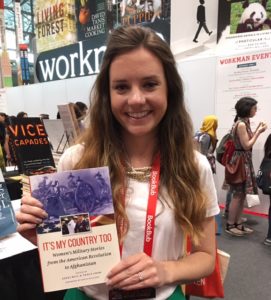

 Also in OneSearch is a review by Iwan Morgan of The Cambridge Companion to John F. Kennedy by Andrew Hoberek available at this
Also in OneSearch is a review by Iwan Morgan of The Cambridge Companion to John F. Kennedy by Andrew Hoberek available at this 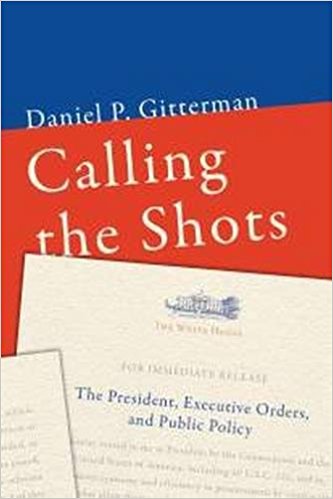

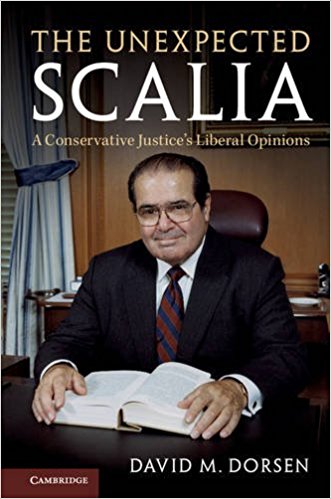 The Unexpected Scalia: A Conservative Justice’s Liberal Opinions
The Unexpected Scalia: A Conservative Justice’s Liberal Opinions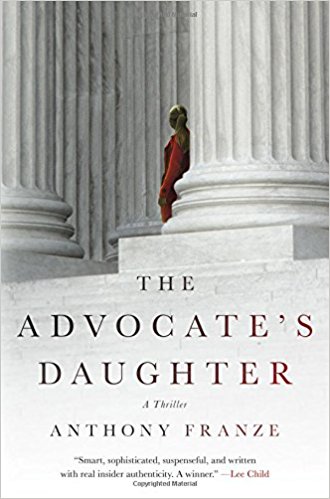

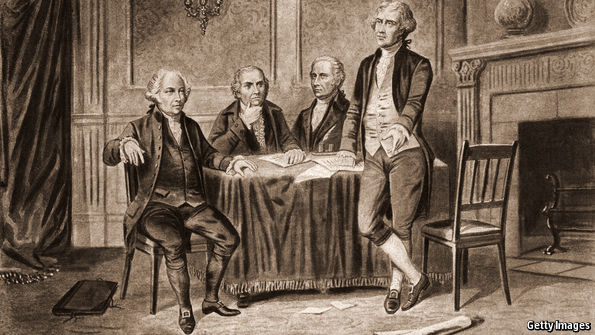 Article I, Section 9, Clause 8 of the United States Constitution (known as the Emoluments Clause) reads:
Article I, Section 9, Clause 8 of the United States Constitution (known as the Emoluments Clause) reads: